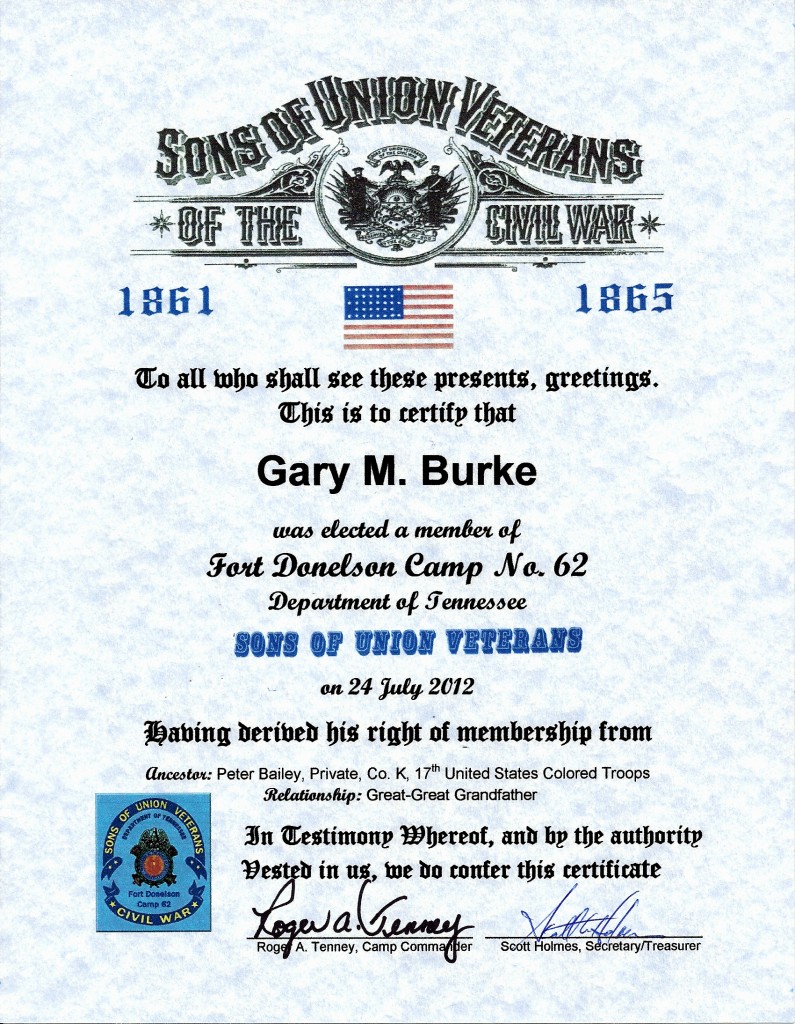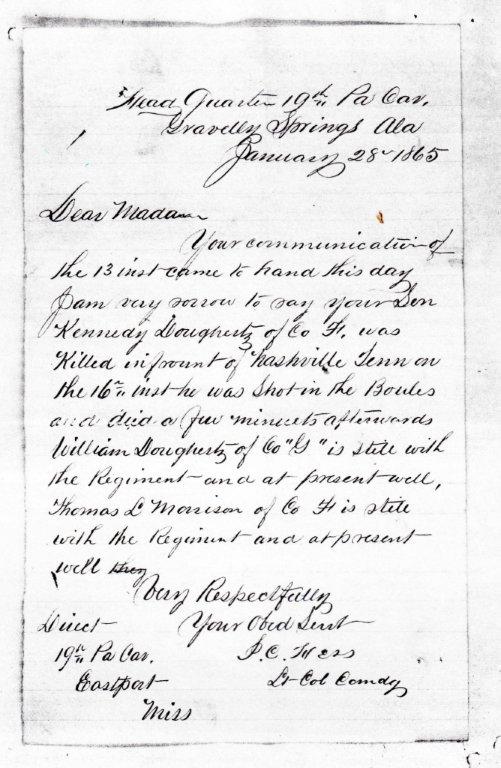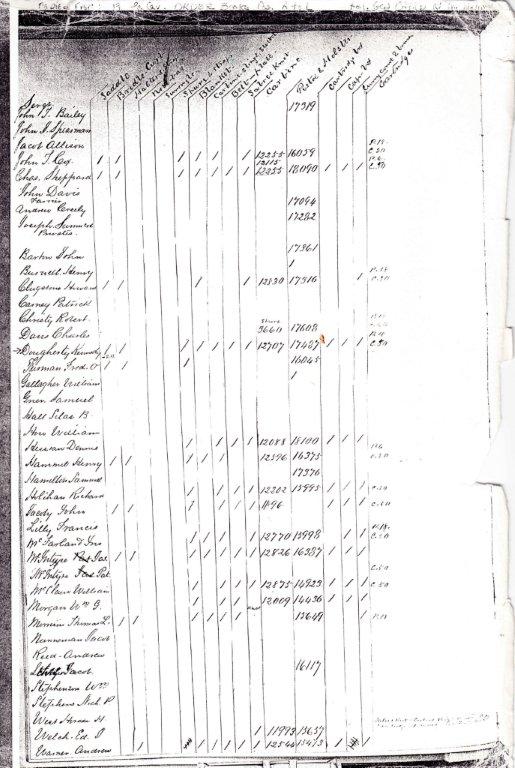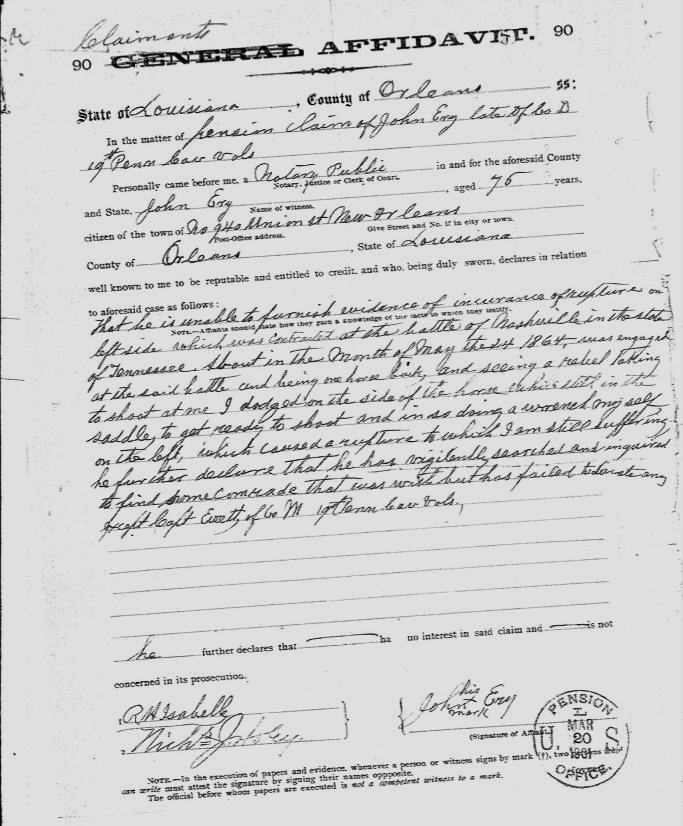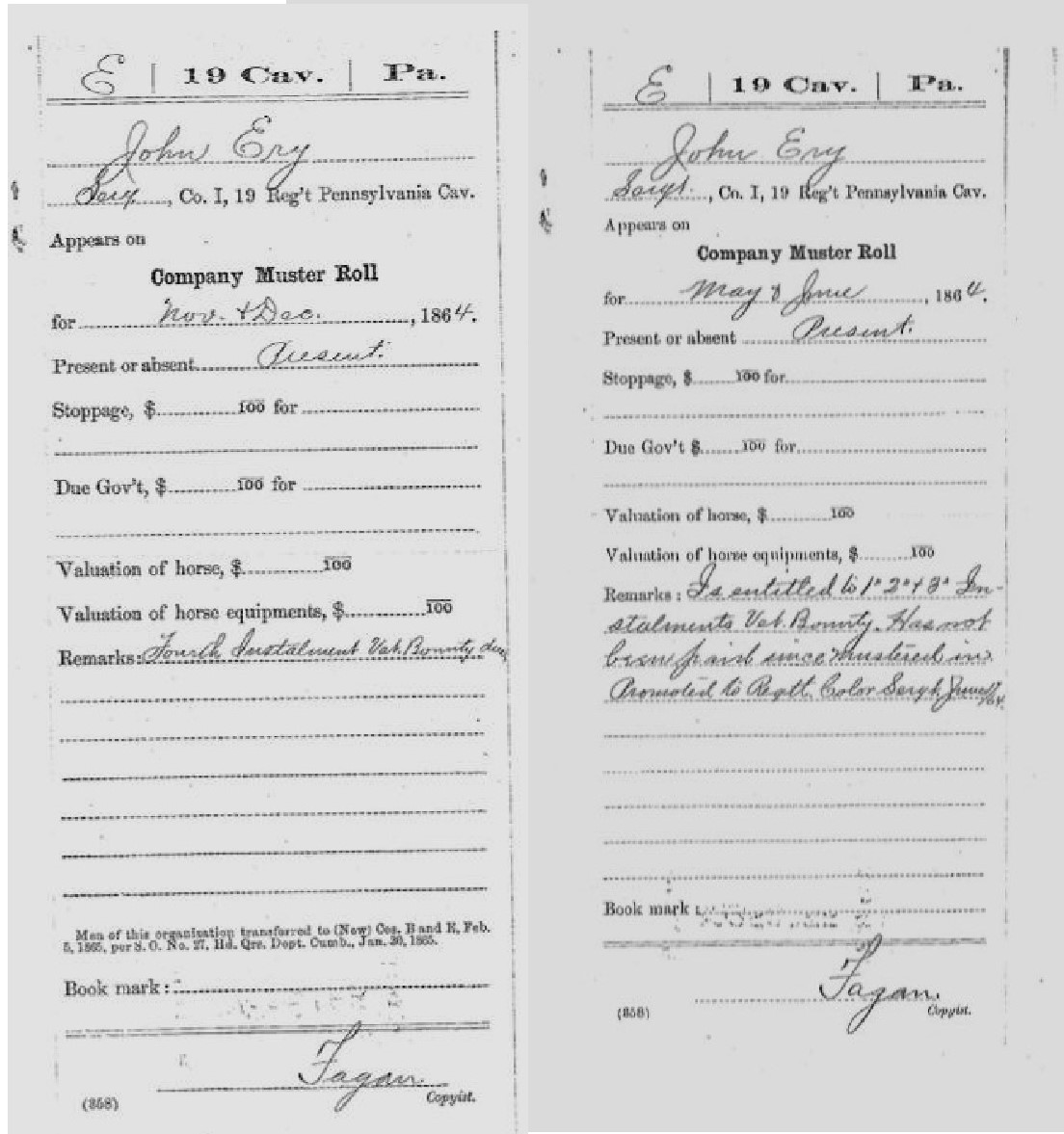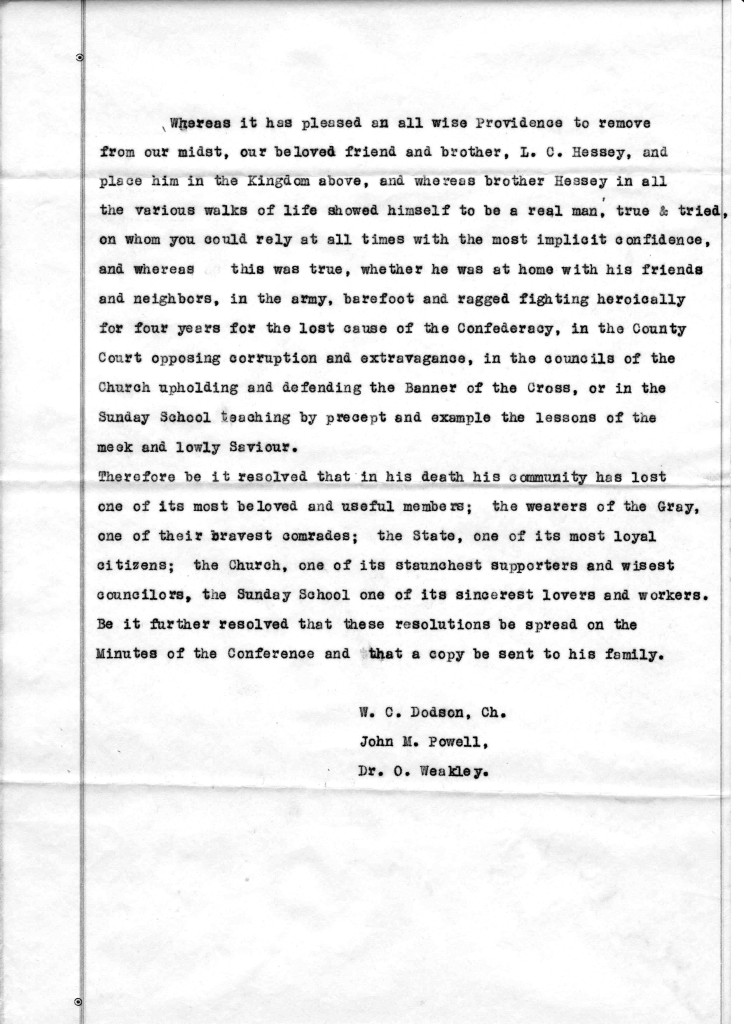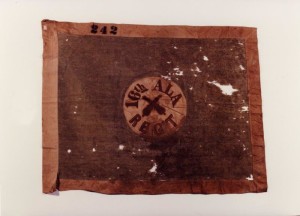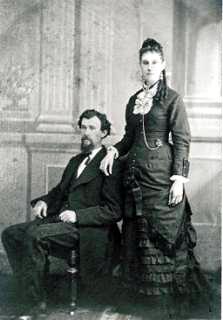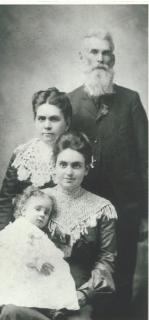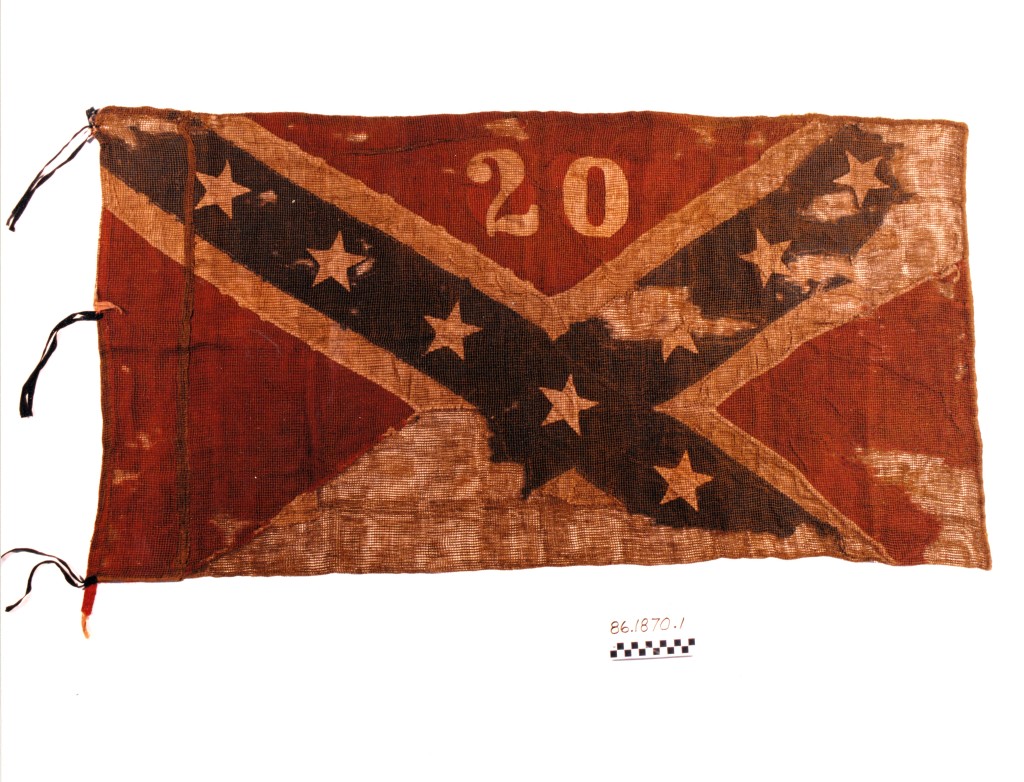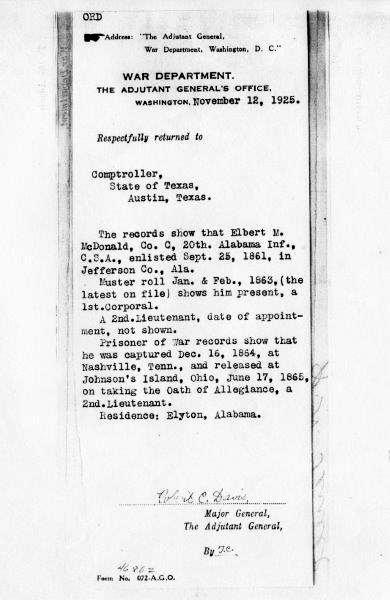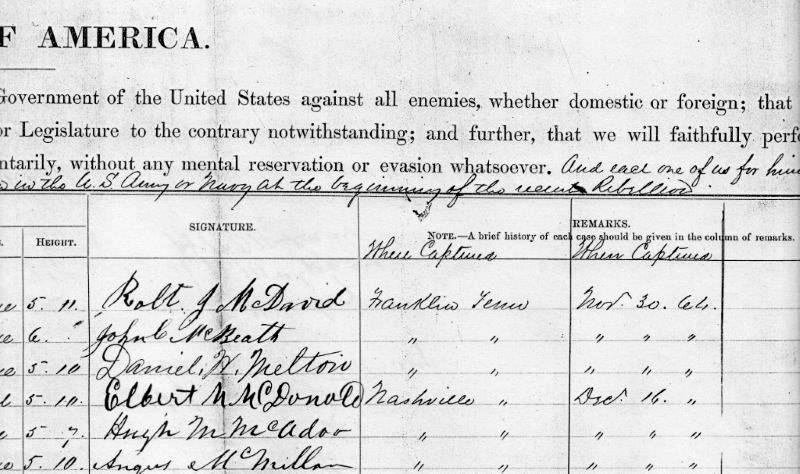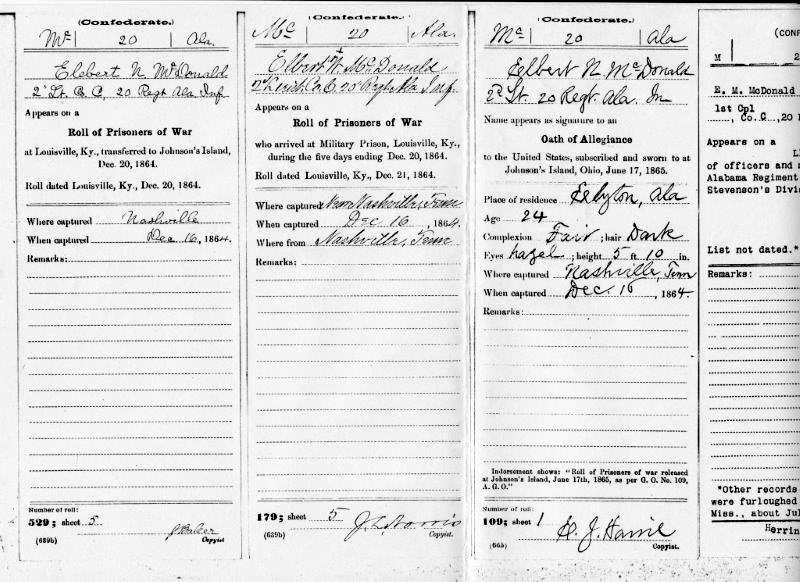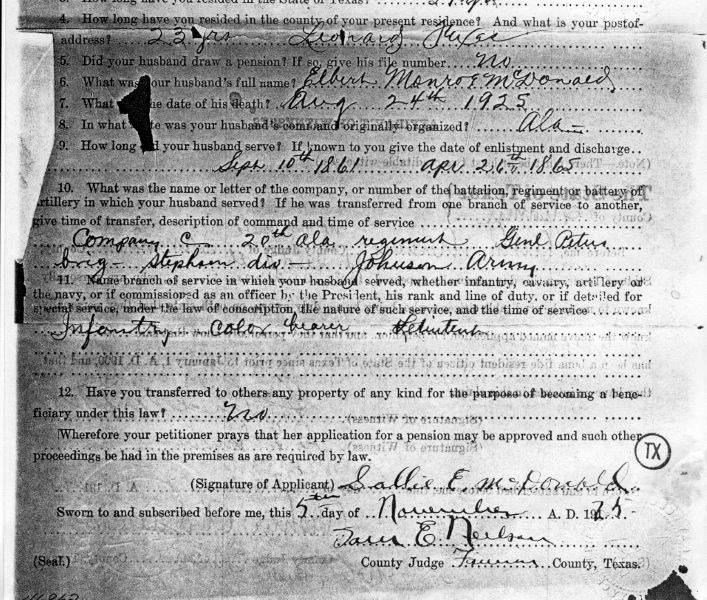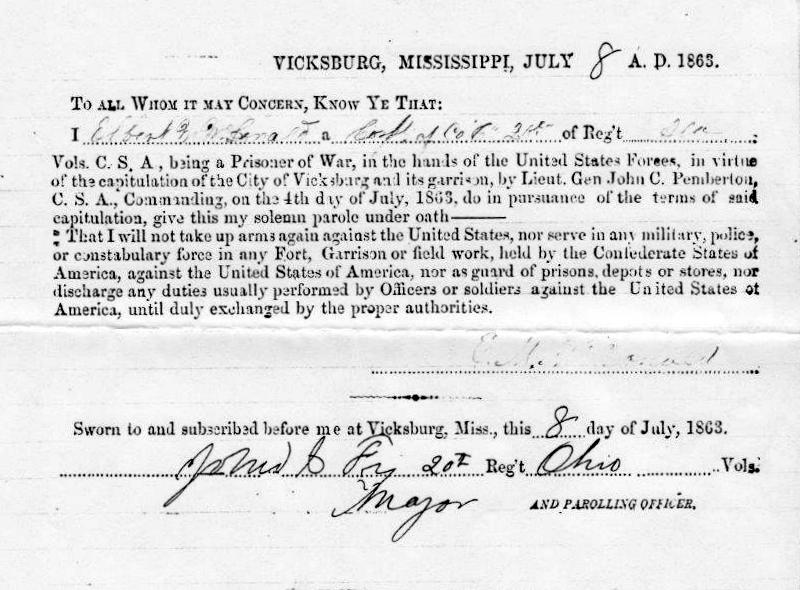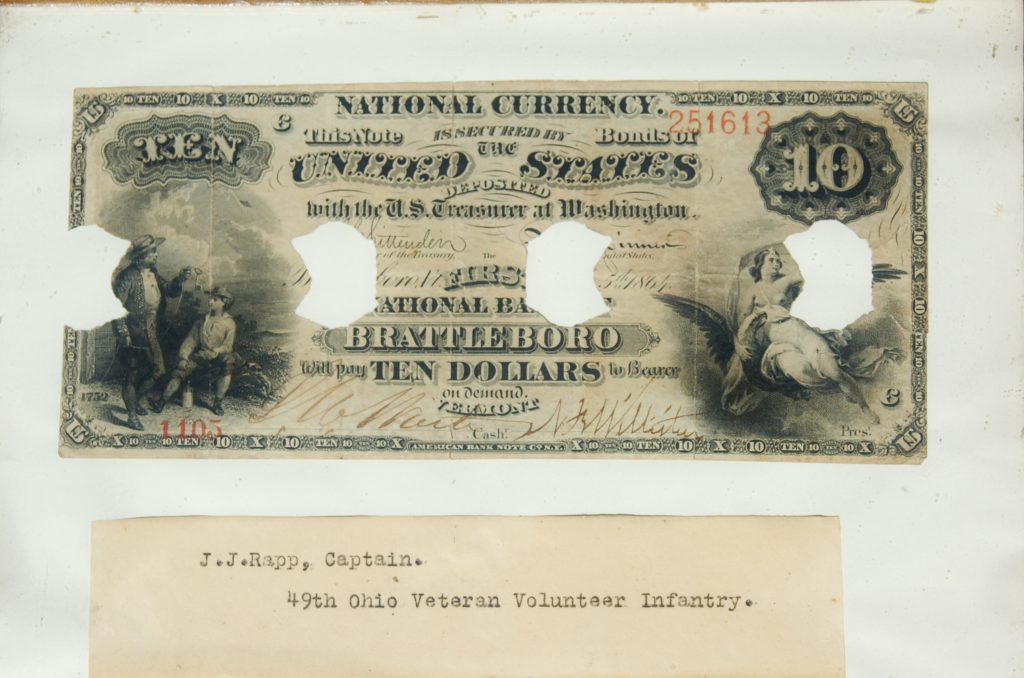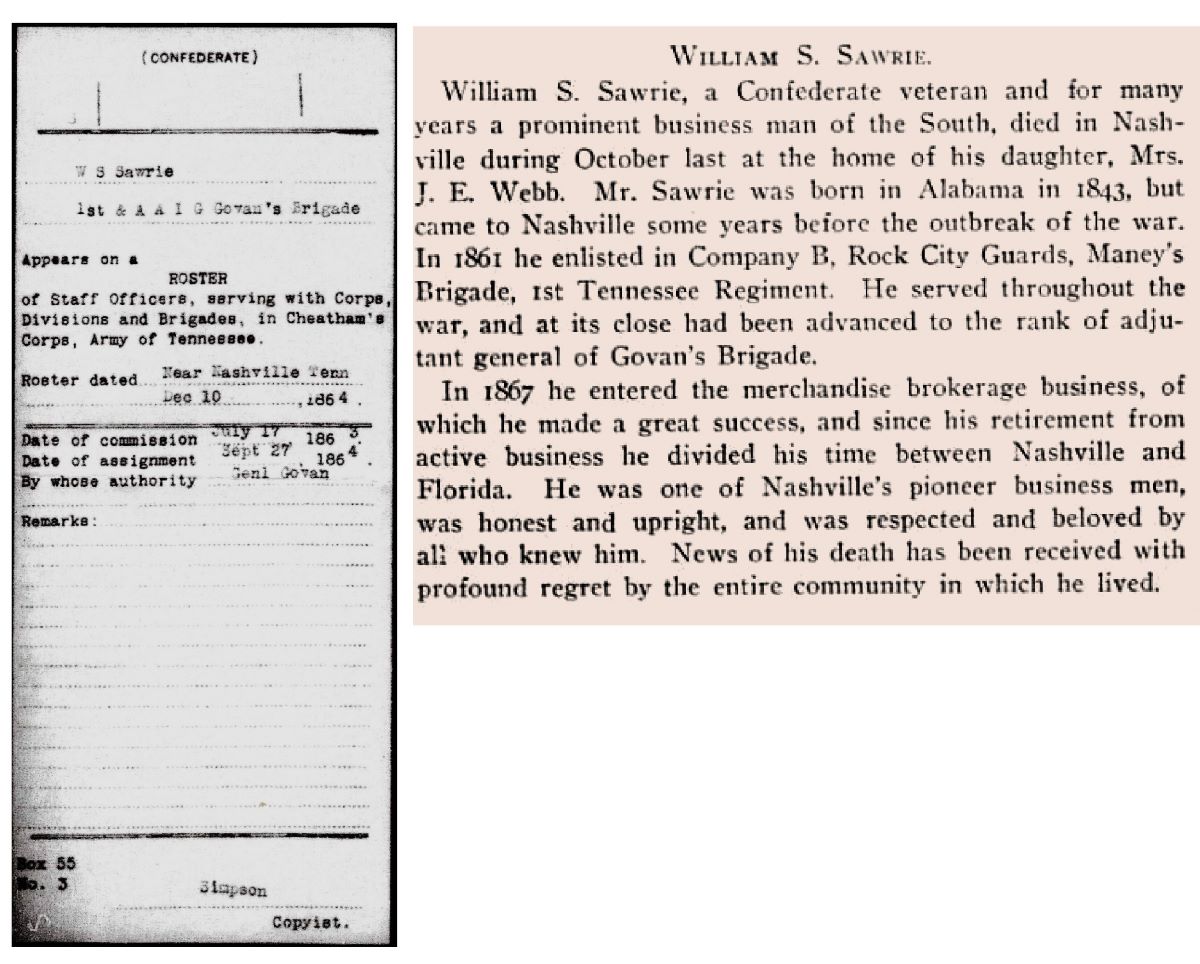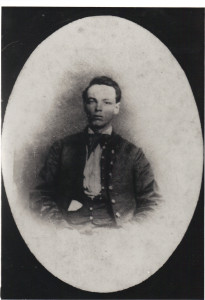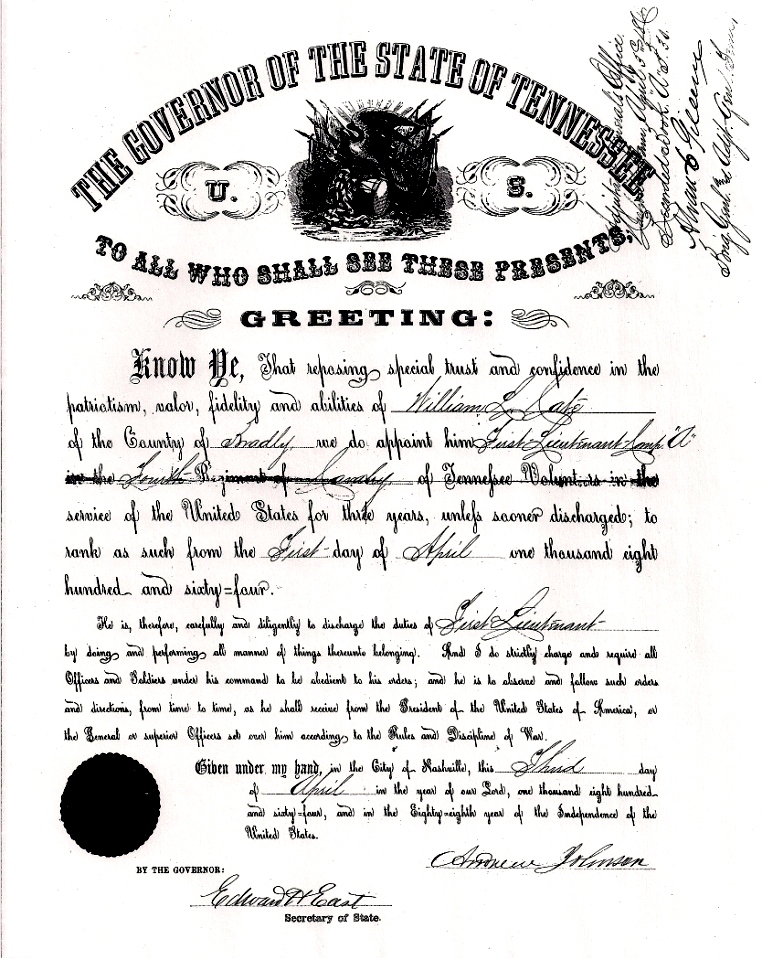In 2012, The Battle of Nashville Trust (then, The Battle of Nashville Preservation Society) began inviting descendants of those who fought on both sides of the Battle of Nashville to send their family’s and ancestor’s history for posting on the website. This page contains the information collected to date. Many of the descendants were in attendance on December 16, 2012, to participate in the placement of a Memorial Wreath on the summit of Shy’s Hill to commemorate the 148th anniversary of the battle.
Submitting your ancestor’s name. If anyone in your family was involved in this conflict, BONT invites you to send your information to us for inclusion in the archived list. To do so, visit the Contact page and include your name along with the name, rank and unit of your ancestor along with any other relevant factual history, photos, or documents for review and posting by BONT.
The descendants submitted to date are listed below in alphabetical order:
• Pvt. Nehemiah Ames, Jr. Descendant: David E. Clark, Sr. of Ft. Wayne, IN. Pvt. Ames, of the 21st Ohio Inf. Co. E, was his 2nd great grand uncle. Born in Pennsylvania in March, 1833, his family moved to Ohio. He enlisted in Ohio on January 4, 1864, at age 30, leaving behind a wife and 5 children. On June 27, 1864, Nehemiah died of disease at Nashville. He was buried in the cemetery behind Ft. Negley (the City Cemetery). Pvt. Ames was involved in actions at Dalton, Georgia, Rocky Face, the battle of Resaca, Pumpkin Creek, and battles about New Hope Church and Allatoona Hills, and Pine Hill and Lost Mountain. Sometime from June 1st to June 17th, he became ill with disease and was transferred to Nashville (presumably by RR) where he died on June 27, 1864.
• Private Peter Bailey. Descendant: Gary Burke of Nashville, a long-time Union re-enactor and former member of the BONT Board of Directors, recently received confirmation that his great-great grandfather was Private Peter Bailey who served in Co. K, 17th United States Colored Troops. The 17th USCT was heavily involved in combat during the Battle of Nashville, including the opening assault on Dec. 15, 1864, as the Union Army began its first offensive on the Confederate right flank in the area of Granbury’s Lunette. The 17th and other USCT units were also involved in the assault on the Confederate forces at Peach Orchard Hill on December 16, 1864. Confirmation of his ancestry qualified Gary for membership in the Sons of Union Veterans.
Pictured below is the Certificate which he received in October, 2012.
The historical and personal impact of this experience was not lost on its recipient:
“My late Father left me a road map to our past that I never knew existed…on the back side of a document highlighted my great, great, great, grandmother had received a ‘Civil War Pension from the Union Army.’ My past and future are ever woven with ALL who served OUR great country North and South.”
• Pvt. John Bloomfield. Descendant: David E. Clark, Sr. of Ft. Wayne, IN. Pvt. Bloomfield, of the 35th Indiana Inf. (Irish Regt.) Co. C, was Mr. Clark’s 1st cousin 3-times removed. Mustered in on October 25, 1864, at Camp Mitchell in Kendallville, Noble County, Indiana, Pvt. Bloomfield was assigned to the same brigade, regiment and company as Pvt. Clark and fought in the Battle of Nashville. From December 17 – 28, 1864, he was involved in the pursuit of the Army of Tennessee to the Tennessee River. He was later stationed at Huntsville, Alabama, and was later involved in operations in East Tennessee until June 1865. On June 16, 1865, was ordered to New Orleans. On June 20, 1865, he deserted but was never found by the Union Army.
• Sgt. Amos Bloomfield. Descendant: David E. Clark, Sr. of Ft. Wayne, IN. Sgt. Bloomfield of the 129th Indiana Inf. Regt. Co. I was his 2nd great grandfather.Enlisting as a private on May 2, 1864, at Camp Mitchell, he left behind a wife and 9 children. Sent on to Chattanooga and assigned to the 2nd Brigade, 2nd Div. 23rd Army Corps. Involved in operations at Marietta and Kennesaw and other actions near Atlanta then North Georgia and into North Alabama. His unit fought at Columbia, the Battle of Franklin, and at Nashville where Sgt. Bloomfield fought at Shy’s Hill. Participated in the pursuit of Hood’s army to the Tennessee River, thereafter sent to Clifton, TN, then to Washington D.C. and then into the Carolinas. He survived the War and was promoted to Full Sergeant. Mustered on August 29, 1865, at Charlotte, NC. He is David’s 2nd great grandfather.
• Private Wright Carlton. Descendant: Bruce Carlton, St. Petersburg, FL, great-grandson. Pvt. Carlton enlisted in Company E, 7th Florida Infantry, in the Confederate Army in South Florida in April, 1862. He fought at Chickamauga in September, 1863 and at Chattanooga in November, 1863, and participated in all battles under Gen. Joseph E. Johnston in the Atlanta campaign. Following Atlanta, he was part of the grueling march from Georgia into Tennessee under General Hood.
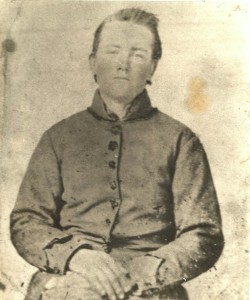 A diary written by a fellow member of the 7th Florida, obtained from the Florida State Archives, notes that Wright Carlton was marching without shoes during this time, but received a new pair and was able to continue on. During this time, Pvt. Carlton saw action in the battles of Spring Hill, Franklin, Third Murfreesboro, and Nashville. The 7th Florida was part of Finley’s Florida Brigade, commanded by Col. Robert Bullock, assigned to Bate’s Division of Cheatham’s Corps. His commanders were Col. Bullock and later, Major Jacob Lash at Shy’s Hill. On December 2, 1864, Bate’s division was sent to Murfreesboro to support Forrest’s Cavalry Corps in its operations in that area. Finley’s Florida Brigade was involved in a skirmish at Overall Creek on December 4 where Col. Bullock was wounded and was replaced by Maj. Jacob Lash. It was also involved in the Third Battle of Murfreesboro on December 7.
A diary written by a fellow member of the 7th Florida, obtained from the Florida State Archives, notes that Wright Carlton was marching without shoes during this time, but received a new pair and was able to continue on. During this time, Pvt. Carlton saw action in the battles of Spring Hill, Franklin, Third Murfreesboro, and Nashville. The 7th Florida was part of Finley’s Florida Brigade, commanded by Col. Robert Bullock, assigned to Bate’s Division of Cheatham’s Corps. His commanders were Col. Bullock and later, Major Jacob Lash at Shy’s Hill. On December 2, 1864, Bate’s division was sent to Murfreesboro to support Forrest’s Cavalry Corps in its operations in that area. Finley’s Florida Brigade was involved in a skirmish at Overall Creek on December 4 where Col. Bullock was wounded and was replaced by Maj. Jacob Lash. It was also involved in the Third Battle of Murfreesboro on December 7.
The 7th Florida returned to Nashville a few days later and was posted on the right flank of the Confederate line on December 15, 1864. Pvt. Carlton was involved in some light skirmishing before Finley’s Florida Brigade was moved that night to the extreme left flank of the Confederate line on Shy’s Hill. On December 16, he was posted on the northeast slope of Shy’s Hill which was overrun by Union troops in the late afternoon. Pvt. Carlton was captured and imprisoned at Camp Chase in Columbus, Ohio. As the diary reveals, the survivors of the regiment thought he was lost to the battle: “We waited at Brentwood Station. W Carlton and the Captain did not return that night and were assumed killed or captured.”
In June, 1865, Private Carlton was released from Camp Chase, and returned to Nocatee Florida, a small town 75 miles southeast of Tampa, Florida. He became a rancher, citrus grower, and land developer and died at 86. Based upon testimony of his Capt. John W. Whidden as to his honorable service in the 7th Florida, Pvt. Carlton was awarded a Confederate pension of $100 per year.
As a South Florida Historical pioneer of note, he was the subject of numerous articles including this story from his descendant Bruce Carlton: “Wright was single and enlisted with a friend by the name of Hooker and promised his friend that if Hooker was killed he would take care of his wife Charlotte. Hooker was killed, and Wright later married Charlotte Albritton Hooker. As a result of this union they had 11 children, one of which was my grandfather, Horace Carlton. There are many descendants of Private Wright Carlton that owe their existence to the luck that Wright was not killed in one of the battles he found, including Nashville and Shy’s Hill.”
• Pvt. John Henry Clark. Descendant: David E. Clark, Sr. of Ft. Wayne, IN. 2nd Great grandfather of Pvt. Clark who was killed in the Battle of Nashville while serving with the 35th Irish Indiana Inf. (Irish) Regt. Co. C. David Clark has been a re-enactor since 2006. He joined the 35th Indiana (Irish Regiment), Co. B in 2007 and then formed Company C. His unit participated in Civil War Days in 2012, and this year’s event will be dedicated to the Battle of Nashville at Angola, Indiana. Pvt. Clark, of Scotch-Irish ancestry, 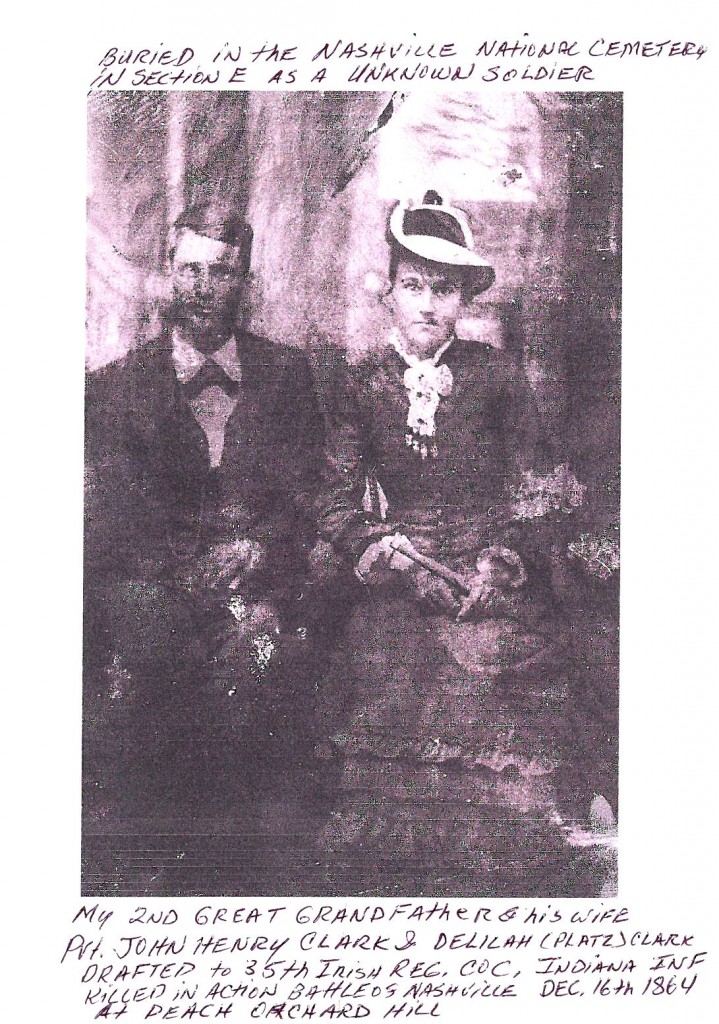 was born in Lancaster County, PA and was 36 when drafted on September 28, 1864. Mustered in at Camp Mitchell in Noble County, Indiana, discharged on September 30, 1865. Leaving behind a pregnant wife and 7 children, Pvt. Clark shipped out from Indianapolis to Chattanooga and was assigned to the 2nd Brigade, 1st Division, 4th Army Corps. After participating in operations in North Georgia and North Alabama, he took part in the actions in Columbia and along the Duck River. He fought in the Battle of Franklin and was in action at Nashville on December 15th and 16th, 1864. Between 12:00 p.m. and 2:00 p.m., December 16, 1864, Pvt. Clark was killed by Confederate artillery along with the soldier standing next to him by an exploding shell. His military records state “killed in action.” His wife filed for pension in April 1866 and received $8.66 per month for her and her 8 children. Her pension was later increased by her legal action to $12.00 per month. The following is one of the witnesses’ account who testified as to how John was killed at Nashville. His name is Jacob Bickel of Co. H, 35th Indiana:
was born in Lancaster County, PA and was 36 when drafted on September 28, 1864. Mustered in at Camp Mitchell in Noble County, Indiana, discharged on September 30, 1865. Leaving behind a pregnant wife and 7 children, Pvt. Clark shipped out from Indianapolis to Chattanooga and was assigned to the 2nd Brigade, 1st Division, 4th Army Corps. After participating in operations in North Georgia and North Alabama, he took part in the actions in Columbia and along the Duck River. He fought in the Battle of Franklin and was in action at Nashville on December 15th and 16th, 1864. Between 12:00 p.m. and 2:00 p.m., December 16, 1864, Pvt. Clark was killed by Confederate artillery along with the soldier standing next to him by an exploding shell. His military records state “killed in action.” His wife filed for pension in April 1866 and received $8.66 per month for her and her 8 children. Her pension was later increased by her legal action to $12.00 per month. The following is one of the witnesses’ account who testified as to how John was killed at Nashville. His name is Jacob Bickel of Co. H, 35th Indiana:
“This John Clark and I were drafted at the same time in the same Township, Fairfield, Dekalb Co., Ind.” “I was drafted Sept. 28, 1864.” “I think,” “and assigned to Co. H. 35 Ind Inf.” “I saw John Clark about every day during service until he was killed.” “He was killed at a battle at Nashville, Tenn. In Dec. 1864. “I think,” “believe,” “Gen. Thomas & Gen. Hood.” “My Co. and his were side by side when he was killed.” “The “signal” was changed to “‘side” before I signed.” “We were advancing under fire sometime in the afternoon.” “I saw a knapsack fly up upon the bursting of a shell to the right of his Co.” “Co. C was on the right and later our Capt., Capt. Dawson” “I think” “told our Co.” “John Clark was killed and some other.” “I do not recall the other’s name.” “Only two men were killed in our Regt. That day and both were killed by the burst of that shell.” “I did not see his dead body,” “but it was the talk all through the Co. that John Clark was killed that day in that way.” “And I never saw him afterwards.” “I do not know who his tent mate was, nor any comrade in his section, nor the address of anyone.” “There were a “Jim” and “John White” in my Co. who new him before he was drafted and of his death.” “I think their in Elkart, Ind.” “I know that” “That John Clark who served in Co., C 35th Inf. and was killed at the time and place stated above.”
Official document relating to Pvt. Clark can be seen in this PDF file: John Clark documents
It is believed that Pvt. John Henry Clark is buried in Section E of the National Cemetery in Nashville as an Unknown Soldier.
• Chaplain Marcus Bearden DeWitt. Descendant: Cary DeWitt Allyn of Nashville, TN, great granddaughter (& husband John Allyn, a member of the BONT board), and John DeWitt “Jack” Allyn and George S. Allyn IV, great-great grandsons. Chaplain DeWitt served in the 8th Tennessee Infantry in Maney’s (Field’s) Brigade of Brown’s Division (BG Mark P. Lowrey commanding at Nashville commanding due to the wounding of Maj. Gen. John C. Brown at Franklin). The 8th Tennessee was posted southwest of Shy’s Hill (below) to protect the left flank of the Army of Tennessee. After the defeat at Nashville, it was assigned to the rearguard under Forrest’s overall command to protect the Army as it made its retreat across the Tennessee.
•Pvt. Kenney Dougherty. Descendant: Unknown. This Union soldier is listed by BONT as a result of an unusual connection. Records indicate that he was in the 19th Pennsylvania Cavalry and was killed in the Battle of Nashville on Dec. 16, 1864. The 19th Pennsylvania was part of Hammond’s Brigade of Knipe’s 7th Division of Wilson’s Cavalry Corps. It is likely that Kenney was close to, if not on, the Granny White Pike behind Shy’s Hill when he was killed.
(Note: see the story and Commission BONPS posted on Lt. Wm. Cate of the 4th Tennessee (US) Cavalry, which was also in the same brigade as Pvt. Dougherty and at the same location during the battle.
The information of Kenney Dougherty came to BONPS through Lloyd Jackson, who came to own the Sharps rifle carried by Dougherty. Lloyd has provided us with two documents, including the ordnance report showing Sharps carbine serial number 12707 that was issued to Kenney Dougherty, and the letter to Kennedy’s mother Mary from Col. Joseph C. Hess regarding his being killed in action. She received an $8 a month widow’s pension. Lloyd is planning on attending the Memorial and will bring the actual Sharps listed in the requisition sheet for inspection.
Sgt. John Ery. Descendant: William Harrington, currently living in Los Angeles. His great-great-grandfather was the regimental color sergeant for the 19th Pennsylvania Cavalry, Co.I. The 19th Pennsylvania was part of Brig. Gen. Joseph Knipe’s Seventh Division of Wilson Cavalry Corps. On Dec. 16, 1864, they were deployed south of Shy’s Hill on the Union far right wing. They were heavily engaged with retreating Confederate troops in multiple skirmishes, including Hollow Tree Gap, Franklin, West Harpeth, Anthony’s Hill, the Christmas Day battle at King’s Hill near Pulaski, and Sugar Creek. Below are records showing his promotion to regimental color sergeant, and his request at age 75 for a pension increase, in which he explained that he was
“…unable to furnish evidence of incurance of rupture on left side which was contracted at the battle of Nashville in the state of Tennessee, in about in the month of May [December] the 14, 1864, was engaged at the said battle and being on horse back, and seeing a rebel taking to shoot at me, I dodged on the side of the horse while still in the saddle to get ready to shoot and in so doing a wrench myself on the left, which caused a rupture to which I am still suffering.”
• Pvt. Alexander Frith. Descendant: Numan D. Warren of Huntsville Alabama. Pvt. Frith was in the 20th Alabama Infantry. This regiment was in line approximately 300 yards west of Peach Orchard Hill on Dec. 16th, 1864. Part of Maj. Gen. Carter L. Stevenson’s Division of Stewart’s Corps, it composed part of Brig. Gen. Edmund W. Pettus’ Brigade. Stevenson’s Division was severly mauled in the retreat to Columbia on Dec. 17, 1864. Part of this division formed part of the rearguard to protect the Army of Tennessee as it attempted to recross the Tennessee River after the defeat at Nashville.
• Corporal Thomas Garrett. Descendant: Sharon Skees Lesner of Defiance, OH, and now Cornersville, TN. Corporal Garrett was her 3rd great grandfather. He served in Co. H, 16th United States Colored Troops, during the Battle of Nashville. The 16th USCT was involved in the opening assault on Dec. 15, 1864, in the area of the Confederacy’s far right flank. He was born about 1808 in New York and settled in Defiance, Ohio, where he worked as a blacksmith and signed on with the Union Army as a volunteer in Co. K, 97th Ohio Volunteer Infantry, which had been organized in Zanesville, Ohio on Sept. 2, 1862. He ended up in Nashville in 1864 and apparently transferred to the 16th USCT. Cpl. Garrett never made it back to Ohio and died in Nashville at the Post Hospital on May 4,1866, of pneumonia. He was about 58 years old. He is buried in the Nashville National Cemetery, Section L, Site 15680.
Friedrich Giessler: A Farm Boy’s Civil War Letters To His Family: Nashville and Beyond
“Attached are multiple letters home from a German farm boy, Friedrich Giessler, writing home to his parents and siblings in Ohio starting in early October 1864 through January 8th, 1865. He was drafted September 21st, 1864 and served in Co. C, 41st Ohio Infantry. The translation done years ago seeks to include Pvt. Giessler’s spelling as for example “Neschwill, Tenesi” or for Hood “Hutt”, for dollars “Talers.” The letters are very interesting as they tell his story as a railroad guard on the trains going south before coming to his unit after Atlanta and Hood has moved north. He was at Franklin (in reserve) and was placed in the hospital later at Nashville because of illness by his sergeant at Hume School hospital. He witnessed the Confederate prisoners after the Battle of Nashville in downtown Nashville. It is with thanks that we have these letters from his descendant, Chip Giessler, a Methodist minister. Some things don’t change in war. Note he asks for money all the time from his family. These letters provide a good insight into the common soldier’s perspective, not grand military maneuvers but the day to day worries and aspirations of the ordinary foot soldier.” The first page shows Giessler and his friend Phillip Gehres. Philip Duer, former BONT president.
War letters of Friedrich Giessler, 41st Ohio Infantry
• Jacob Heims. Descendant: Robert Wayne Heims of Nashville, TN and Carl Jerry Klein of Nashville, TN. He was in the 1st Tennessee Infantry. This regiment was also part of Maney’s Brigade. He was 21 when he joined. He was quoted as saying, “I didn’t fight for the slaves, I fought to defend against the invaders.”
• Gordon Heims. Descendant: Robert Wayne Heims of Nashville, TN and Carl Jerry Klein of Nashville, TN. Co. F 1st Tennessee Infantry. Gordon Heims, brother of Jacob Heims, joined up in October of 1862. He fought for 3 months with Forrest. At Nashville, he was in Maney’s Brigade. Both Robert Wayne Heims and Carl Jerry Kleinn are avid Civil War collectors.
• Colonel Thomas Hord Herndon. Descendent: the late Fred Crown, former Board member at Traveller’s Rest Plantation and Museum, Gen. John Bell Hood’s HQ on the first day of the battle, is the great great nephew of Col. Thomas Hord Herndon of Eutaw and Mobile, Alabama. He was elected Major of the 36th Alabama Infantry when it was formed in May of 1862. Rising to full Colonel commanding the regiment, the 36th Alabama suffered significant casualties at Chickamauga and Chattanooga. Wounded at Chickamauga and at Atlanta, rather than resign, Col. Herndon rejoined the regiment in Florence, Alabama prior to Hood’s Tennessee campaign. At the time of the Battle of Nashville, the regiment numbered approximately 300. Assigned to Clayton’s and later Holtzclaw’s brigade, the regiment was placed in defense in the middle of the line on Peach Orchard Hill. He surrendered with his regiment at Spanish Fort, Alabama in 1865. After the War, he returned to his law practice and in 1878, became a U.S. Representative and served in that role until his death in 1883. For more information about Col. Herndon, click the following link:
Thomas H Herdon_36th Alabama Infantry Regiment
Lycurgus Clay “LC” Hessey. Descendant: Scott Hessey of Hermitage, TN. LC Hessey was the great grandfather of Scott Hessey. He was in the 20th Tennessee, Tyler’s Brigade, Bate’s Division, as a 19-year-old and fought for nearly three years before he was captured in Franklin during the retreat from the battle of Nashville. His inclusion in Bate’s Division, commanded by Col. William Shy, would have placed him in combat on Shy’s Hill on December 16, 1864.
Below is LC’s story as told by Scott Hessey, accompanied by photographs and other documentation which the family has been able to preserve and granted permission to BONPS for this publication:
A Proud Descendant Tells the Story
L.C. Hessey’s Journey With The 20th Tennessee, Including Shy’s Hill
Below is the story of LC Hessey of the 20th Tennessee, as told by his great grandson Scott Hessey, accompanied by photographs and other documentation which the family has been able to preserve and granted permission to BONPS for this publication:
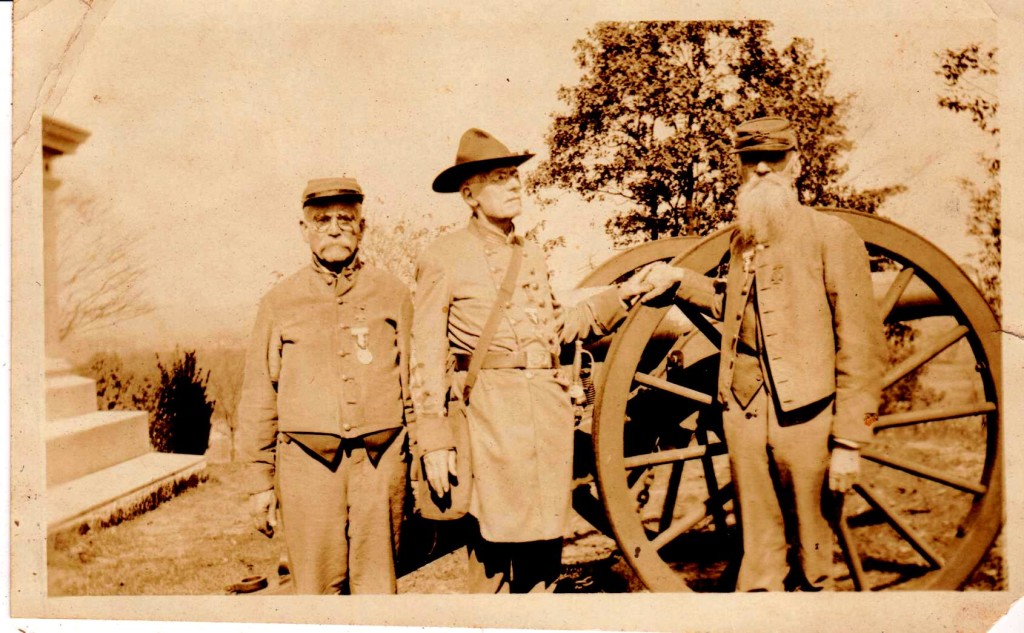
LC Hessey at Orchard Knob Reunion, 1921 (Click to enlarge)
“While not much of a story teller I will be as concise and brief as possible trying to tell this story.
“My Great grandfather’s name was Lycurgus Clay Hessey. He was born June 26 1843. Most personal accounts I have heard and in many documents he is simply referred to as L.C. He was born on a farm just northeast of Stones River from what was the Old Clover Bottom estate. This farm is largely still intact and to this day is still farmed for income by L.C.’s living grandson who is 83 years of age, and his son.
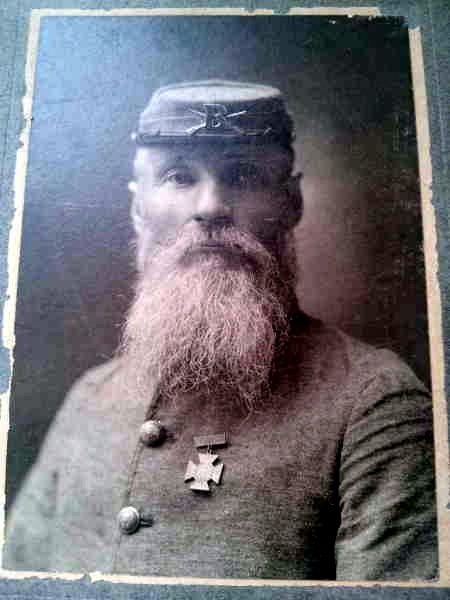 “L.C. joined the 20th Tennessee Infantry Co. I, “ The Hermitage Guard, “ in October of 1862 where he served for the duration of the war. Of note, LC’s oldest brother John H. Hessey served in 1st Tennessee Calvary Battalion ( McNairy’s ). Another brother, James M. Hessey, served in the 20th Tennessee, Co. I alongside his brother. (Truthfully ,there were so many Hessey’s that fought in the Civil War I am still sorting through the relationships after 2 years of research).
“L.C. joined the 20th Tennessee Infantry Co. I, “ The Hermitage Guard, “ in October of 1862 where he served for the duration of the war. Of note, LC’s oldest brother John H. Hessey served in 1st Tennessee Calvary Battalion ( McNairy’s ). Another brother, James M. Hessey, served in the 20th Tennessee, Co. I alongside his brother. (Truthfully ,there were so many Hessey’s that fought in the Civil War I am still sorting through the relationships after 2 years of research).
“L.C. was always present and accounted for on every muster roll I could find. He was known to have been wounded twice in battle. Once at Missionary Ridge and also at Jonesboro. But I can provide no details to the injuries. Suffice to say I know he suffered no amputations. On Dec. 18th 1864 while I assume in retreat from the Battle of Nashville, he was captured around Franklin/ Spring Hill. He was transferred to Columbus, Ohio to Camp Chase. On May 12th, 1865, Lycurgus signed an Oath of Allegiance to the USA and was paroled.
“He returned home to the farm he was born on and set about making his life post war. In 1872 he married his wife Addie Scott Together they had 10 children. By the turn of the century the farm was a very prosperous enterprise with his sons taking over much of the work and business.
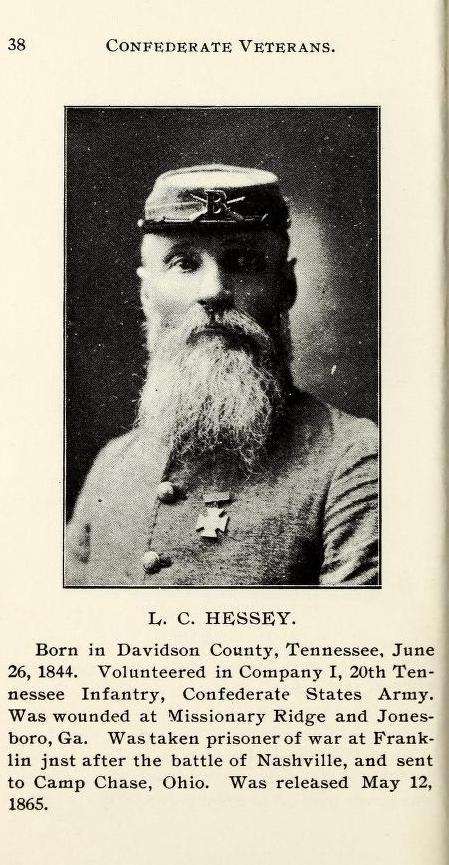 LC turned his attention to old Confederate reunions. It was said he seldom missed a get together with the boys from the 20th or the Cheatham Bivouac Confederate Veterans Company B.
LC turned his attention to old Confederate reunions. It was said he seldom missed a get together with the boys from the 20th or the Cheatham Bivouac Confederate Veterans Company B.
“While still spry in his middle 60’s LC served his community in the Davidson County Court system as Justice of the Peace/Magistrate for the 4th Civil District. I have found numerous references to this; while uncertain, I believe this may have been an elected position.
“Of other historical family significance to the “lost cause of the confederacy, “ two of L.C.’s sons worked at the Confederate Soldiers Home in Hermitage for several years. John W. Hessey (WWI Veteran) was a carpenter at the home. His other son Daniel M. Hessey was cook/operations at the home. Even Daniel’s wife Hazel or LC’s daughter-in-law was a nurse at the home, caring for the old veterans. LC passed away June 24th 1922 and is buried in the family cemetery in Hermitage.
Scott Hessey
Among the documents most cherished by the Hessey family is this letter of condolence below, written to the family by veterans of the 20th Tennessee:
(Click to enlarge)
• 1st Lt. Thomas Armstrong Jones. Descendant: Thomas W. Lawrence, Jr., of Nashville, who is a member of the BONT Board of Directors and BONT website webmaster. Also, great-great grandsons Thomas W. Lawrence III and Todd W. Lawrence. Tom Jones, Tom’s namesake and his great grandfather, enlisted as a private at the age of 21 with the 16th Alabama Infantry Regiment, Co. D, in August, 1861, in Evergreen, Alabama, and fought all four years including the battles of Franklin and Nashville in late 1864.
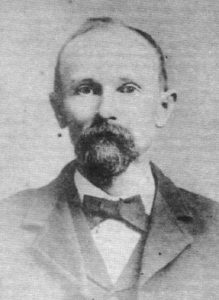 In Nashville, the 16th Alabama was in Brig. Gen. Mark Lowrey’s brigade, Cleburne’s Division, Cheatham’s Corps. The 16th was likely engaged with the initial Union assault on the Confederate right line on December 15, 1864. On Dec. 16, his unit was initially located on Shy’s Hill, but was later moved by Gen. Hood to the middle of the Confederate right flank at Peach Orchard Hill, and were holding firm until the left wing of the Confederate line was broken at Shy’s Hill, ending the Battle of Nashville with the ensuing Confederate retreat.
In Nashville, the 16th Alabama was in Brig. Gen. Mark Lowrey’s brigade, Cleburne’s Division, Cheatham’s Corps. The 16th was likely engaged with the initial Union assault on the Confederate right line on December 15, 1864. On Dec. 16, his unit was initially located on Shy’s Hill, but was later moved by Gen. Hood to the middle of the Confederate right flank at Peach Orchard Hill, and were holding firm until the left wing of the Confederate line was broken at Shy’s Hill, ending the Battle of Nashville with the ensuing Confederate retreat.
Lt. Jones surrendered and was paroled in Greensboro, NC in April, 1865. The 16th Alabama, even after it was combined with other Alabama units, had less than 50 men remaining from its original 867 troops. Lt. Jones returned to Garland, Alabama where he married and had six children. As a farmer in Conecuh County, he applied for and was awarded his pension in 1913. He died in 1917 at the age of 76.
• Silas Jones. Descendent: Doug Jones of Nashville, former president of BONPS and currently vice-president of the Tennessee Civil War Preservation Association. Silas Jones was Doug’s great-great-grandfather and was one of four brothers from Maury County, Tennessee, who fought in the Battle of Nashville.
Silas and his brothers, James “Shug”Jones and John Jone, were all members of Biffle’s 19th Cavalry. On the first day of the battle, December 15, 1864, the three Jones’ brothers fought with the 19th Calvalry, dismounted, at Granbury’s Lunette on the far right flank of the Confederate line. On the second day, the 19th Cavalry, again dismounted, fought along the railroad tracks at the foot of Peach Orchard Hill. They took part in screening the Army’s retreat south on December 16.
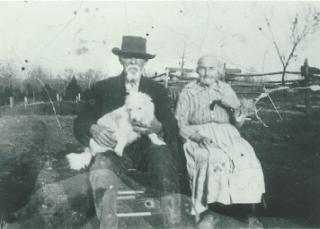
Charles Bennett Jones
The fourth brother, Charles Bennett Jones, was an infantryman and was stationed in Redoubt No. 5 on December 15, 1864.
The commander of Redoubt No. 5 was Major Thomas Jameson, who was the brother of Silas Jones’ wife Mattie Jameson Jones. Major Jameson, who was Doug’s great-great uncle, was shot in the thigh at Redoubt No. 5 and was captured and sent to prison at Camp Chase in Ohio. Charles Bennett Jones escaped down the hill after helping hold off the huge Union force as long as possible.
On Dec. 16, he was stationed in the cornfield at the foot of Shy’s Hill, where he fought until the hill was surrendered late in the day.
After the battle, Doug’s great-great-grandfather Silas Jones was captured in Franklin at the Harpeth River (where the current Highway 31 bridge is located). The 19th Cavalry had been dismounted after crossing the river, and Silas was sent back across the river to tell Confederate forces to fall back. He was captured, beaten, and sent by train to Camp Chase Prison in Ohio. He was later released in Richmond, Virginia, and walked back home to Maury County, Tennessee. (Pictured at left: Maj. Thomas Jameson)
- • Pvt. Andrew W. Love.Descendant: Carey Stevens, Tulsa, OK. Pvt. Love was Carey Stevens’ great-great grandfather, and the GGGF of James Andrew Stevens of Joplin, MO, who is an active re-enactor with a rank of Captain (Adjutant) CSA 1st Arkansas Battalion. Pvt. Love was living at his home in Eden, GA., with wife Sarah Jane (Canady) Love and 6 year old daughter Tallulah when he enlisted on June 3, 1861 in Bryan County, GA. He served in the 25th Regiment, Georgia Infantry, Company D, under Brig. General Stevens. The 25th Georgia fought in a long list of battles, including Shiloh, before their engagements in Franklin and Nashville as part of Maj. Gen. Bates’ Division, Brig. Gen. Henry R. Jackson’s brigade, which helped defend Shy’s Hill on Dec. 16, 1864. Pvt. Love was captured in Spring Hill, TN, on that date, and was taken prisoner. On Dec. 28, 1864, as a POW, he was admitted to the Union General Hospital at Nashville with a diagnosis of “Inflammation of the Lungs” and died of pneumonia on Dec. 31, 1864, at the age of 34. He was buried at the Nashville City Cemetery in grave No. 10805.
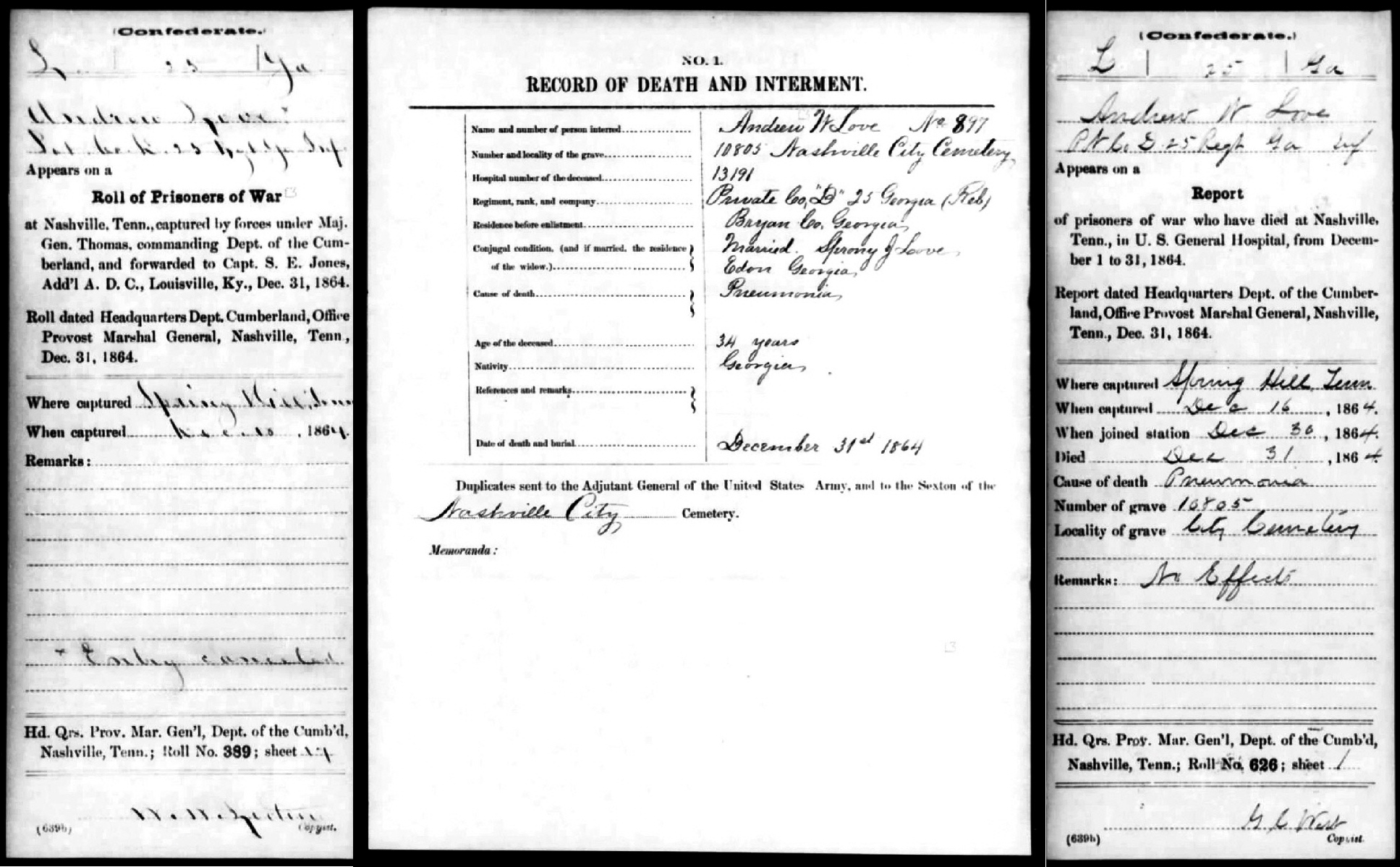
(click to enlarge)
• William Giles Lumpkins. Descendent: Christian Puryear. Private Lumpkins was the great-great-grandfather of Christian Puryear of Nashville. He served as part of Biffle’s Brigade under General Nathan Forrest, enlisting in December, 1862. Mr. Puryear indicated that records show that around December 20, 1864, Private Lumpkins was noted to be “deserted.” As this was during the time of Forrest’s cavalry moving back through Columbia after the Battle of Nashville, the family believes it is likely that he simply returned home to nearby Lawrenceburg, Tennessee at that time.
• Pvt. Alexander Hunter Mathews. Descendent: Alex Thompson of St. Simon’s Island, Georgia. He is the great-great-grandson of Private Mathews, who fought in the Battle of Nashville as part of Company K, 25th Georgia Regiment. After the war, Pvt. Mathews became a pharmacist and surgeon, practicing in Statesboro, Georgia.
Note from BONPS pres. Philip Duer: The 25th Georgia was at Shy’s Hill in Brig. Gen. Henry R. Jackson’s Brigade of Bate’s Division of Cheatham’s Corps and was posted down the east slope as the last brigade in line of the division (Tyler’s Brigade under Benton Smith and Finley’s under Jacob Lash and then Jackson’s). In Wiley Sword’s book, The Confederacy’s Last Hurrah, there are some interesting stories about this brigade. At the time of the Union assault, they were not under any pressure originally and they happened to be watching eastward (to their right) the fight along the stone wall on the Granny White pike, when suddenly they started receiving rounds from above them on the hill where their sister brigade, Finley’s (the Florida Brigade) broke, causing the whole line to unhinge.
• 2nd Lt. Elbert Monroe McDonald. Descendant: Alan Dowdy, Broken Arrow, OK, great-grandson. Monroe McDonald was from Elyton, in Jefferson County, Alabama, 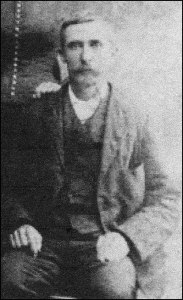 and had been attending Howard College in Marion, AL when the war broke out. He enlisted as a private on Sept. 25, 1861, in Company C of the 20th Alabama Infantry; he was one of the original members of Co. C. He was appointed a 1st Corporal on July, 2, 1862 and was still a corporal upon surrendering at Vicksburg. While at Vicksburg he received a slight wound to the arm. After signing a parole on July 8, 1863 and later being exchanged, he participated with his unit in the battle of Lookout Mountain, Tennessee, and later went through the Atlanta Campaign. At one point during this time, he was a color bearer.
and had been attending Howard College in Marion, AL when the war broke out. He enlisted as a private on Sept. 25, 1861, in Company C of the 20th Alabama Infantry; he was one of the original members of Co. C. He was appointed a 1st Corporal on July, 2, 1862 and was still a corporal upon surrendering at Vicksburg. While at Vicksburg he received a slight wound to the arm. After signing a parole on July 8, 1863 and later being exchanged, he participated with his unit in the battle of Lookout Mountain, Tennessee, and later went through the Atlanta Campaign. At one point during this time, he was a color bearer.
Monroe McDonald’s unit was part of Hood’s Tennessee campaign, and later took part in the battle of Nashville. By that time he had been appointed a 2nd Lieutenant. Lt. McDonald was captured on the second day of the battle, on Dec. 16, 1864, and was transferred on Dec. 20, 1864 to Johnsons Island, Ohio. On June 17, 1865, he signed an Oath of Allegiance and was released.
Above: The 20th Alabama Flag carried by the regiment in 1864. It was hidden under the clothing of the regiment’s flag-bearer to avoid surrendering it to Federal forces in 1865 and eventually made its way into the Alabama Dept. of Archives and History in 1943.
After the war, he moved to Texas and lived west of Greenville, Texas for a while and later lived in Leonard, Texas. During this time he became a school teacher and ran a cotton gin. Just before his death in Leonard on Aug. 24, 1925, he was able to attend the last reunion for Confederate Veterans held in Dallas. Pictured below are some of his official military documents:
• Corporal Henry McGhee. Descendant: Gene Andrews of Nashville, TN. Cpl. McGhee was a member of the 50th Tennessee Infantry, in Cheatham’s Corps, Brown’s Division, commanded by Brig. Gen. Mark Lowery after the surrender of Maj. Gen. John C. Brown at Franklin.
• Capt. Angus McMillan, 6th Florida Infantry. Descendant: Michelle Kirby, Tallahassee, Florida. Capt. McMillan, of the 6th Florida Infantry, Bate’s Division, Cheatham’s Corp, was her great grandfather. This brigade was one of the three brigades of Bate’s division that were on Shy’s Hill at the climax of the battle and the breakthrough on December 16, 1864.
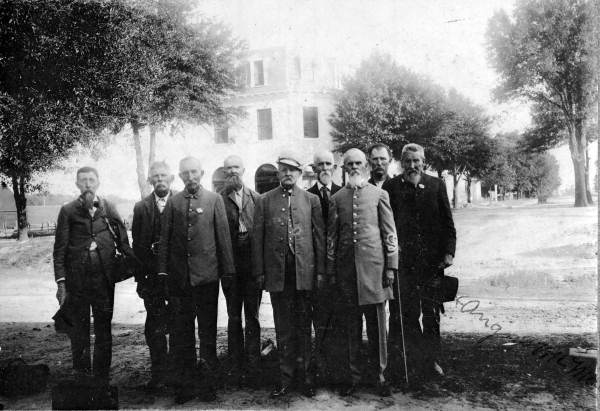 Above: Angus McMillan, far right, with men from his CVA camp, Camp McMillan, who had just debarked from a train in downtown Chipley, Florida, after a reunion. Others pictured in the group, all survivors of Company K, 6th Florida, include (L-R): William Thomas Jeffries (note loss of left arm from battle 9/19/1863, amputated on the battlefield in Tennessee), E. Everitt, J. Martin, E. Mathias, Dan Bowie, ? Mosley, Dr. Wilson, ?, and Capt. McMillan.
Above: Angus McMillan, far right, with men from his CVA camp, Camp McMillan, who had just debarked from a train in downtown Chipley, Florida, after a reunion. Others pictured in the group, all survivors of Company K, 6th Florida, include (L-R): William Thomas Jeffries (note loss of left arm from battle 9/19/1863, amputated on the battlefield in Tennessee), E. Everitt, J. Martin, E. Mathias, Dan Bowie, ? Mosley, Dr. Wilson, ?, and Capt. McMillan.
Capt. McMillan had also been engaged in the action at Murfreesboro days before during the same Tennessee campaign when Bate’s division was attached under the command of Gen. Nathan Forrest.
He was captured during the battle at Shy’s Hill in Nashville, and after returning from being a POW at Johnson’s Island, he helped found Chipley, Florida (named after Col. W.D. Chipley). Her father’s name is Finley McMillan, whose father was named “Finley” by Angus McMillan after Brigade commander Jesse Finley whom Angus served under.
Michelle is very active in the United Daughters of the Confederacy in Florida and maintains a page of information relating to her great grandfather at http://www.rdonmcleod.org/captain-angus-mcmillan.html.
• Pvt. Jacob Oesch (Ash). Descendent: Bob Werner of Cleveland, Ohio. Pvt. Ash is his great-grandfather on his mother’s side. Pvt. Jacob Ash volunteered for service with the 182nd O.V.I. on Oct. 22, 1864 at Camp Chase, Columbus, Ohio. Family lore, 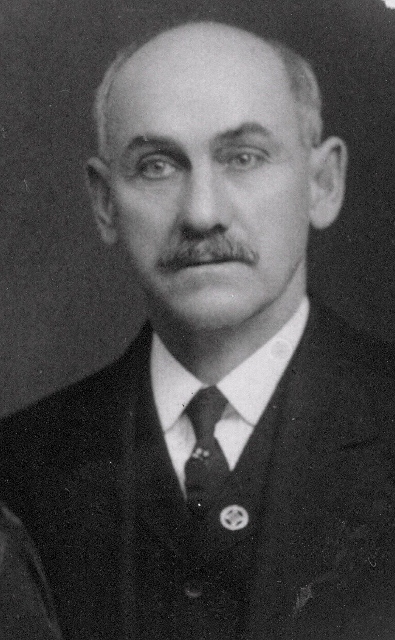 substantiated by some documentation, indicates that on the day of enlistment, 2nd Lt. Charles Nichols spelled Jacob’s name “Ash.” Jacob signed the document with an X. Jacob was born Dec. 1846 in Canton Bern, Switzerland. At the time of enlistment, troops were needed to reinforce Middle Tennessee and Pvt. Ash and others were immediately transferred to Camp Dennison just north of Cincinnati to fill the ranks of the 183rd O.V.I., where Jacob was assigned to Company K. The 183rd was assigned to Ruger’s Division, 23rd Corp, and fought at Franklin and Nashville, and was later assigned to Sherman’s Army in the Carolina Campaign. Jacob mustered out at Salisbury, NC in July, 1865. He sustained a “slight” wound at Franklin involving a shot in the right leg. This wound, coupled with partial deafness, affected his ability to work the rest of his life. Unable to work on farms, he became a carpenter. An article from the New Philadelphia Times dated 4/19/1897, stated: “Ragersville – The contract for building the Lutheran Church was awarded to Messrs. Simon Neff and Jacob Ash on last Saturday. Consideration $805.00.” The church stands today as the Historical Society Museum. Jacob Ash died in Ragersville, Auburn Twp., Tuscarawas County, Ohio, on March 21, 1902, which was home for him and wife Mary Miller.
substantiated by some documentation, indicates that on the day of enlistment, 2nd Lt. Charles Nichols spelled Jacob’s name “Ash.” Jacob signed the document with an X. Jacob was born Dec. 1846 in Canton Bern, Switzerland. At the time of enlistment, troops were needed to reinforce Middle Tennessee and Pvt. Ash and others were immediately transferred to Camp Dennison just north of Cincinnati to fill the ranks of the 183rd O.V.I., where Jacob was assigned to Company K. The 183rd was assigned to Ruger’s Division, 23rd Corp, and fought at Franklin and Nashville, and was later assigned to Sherman’s Army in the Carolina Campaign. Jacob mustered out at Salisbury, NC in July, 1865. He sustained a “slight” wound at Franklin involving a shot in the right leg. This wound, coupled with partial deafness, affected his ability to work the rest of his life. Unable to work on farms, he became a carpenter. An article from the New Philadelphia Times dated 4/19/1897, stated: “Ragersville – The contract for building the Lutheran Church was awarded to Messrs. Simon Neff and Jacob Ash on last Saturday. Consideration $805.00.” The church stands today as the Historical Society Museum. Jacob Ash died in Ragersville, Auburn Twp., Tuscarawas County, Ohio, on March 21, 1902, which was home for him and wife Mary Miller.
• Knud Otterson. Descendant: Jane Otterson Miller (& husband Vernon Ege). Private Knud Otterson was with Co. A, 5th Minnesota Infantry in which he volunteered early in the war in 1862 and despite two war wounds over the ensuing three years, finished his tour of duty in Alabama in 1865. Jane Miller is his great granddaughter and she and husband Vernon Ege have written a heavily-researched 27-page booklet telling Knud’s fascinating story as a Minnesota infantryman. That story includes his harrowing ordeal in Nashville, where he was with the 5th Minnesota when it charged across open fields and up the slope of Shy’s Hill on Dec. 16, 1864. This is the charge that is depicted in the famous Howard Pyle painting posted on the Home page of this website. In the charge across open ground, Knud was wounded in the left hip by a shell fragment and spent time in Cumberland Hospital in Nashville before getting additional care and ultimately being reassigned to Alabama, where he was on duty at war’s end. Below is a PDF link with the initial draft of the booklet, not yet in final form. But Jane and Vernon has granted permission to BONPS to included it on this page for the Shy’s Hill Memorial.
The Civil War Journey of Knud Otterson, 5th Minnesota Infantry
Note: The authors have authorized individuals to print copies of the booklet above for personal use, but ask anyone desiring to print multiple copies for distribution to request permission by emailing Vern Ege at vernege@comcast.net.
Capt. Jonathan Joseph Rapp. Descendant: Taylor Agan, a Franklin, TN, songwriter who is Capt. Rapp’s 4th great grandson. Capt. Rapp was born January 1, 1836 in Lawrence, 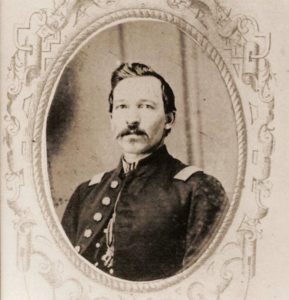 Pennsylvania, and died September 3, 1922 in Clunette, Indiana. He entered service August 15, 1861, at age 23 for 3 years in Co. C, Liberty Guards, 49th Ohio Veteran Volunteer Infantry.
Pennsylvania, and died September 3, 1922 in Clunette, Indiana. He entered service August 15, 1861, at age 23 for 3 years in Co. C, Liberty Guards, 49th Ohio Veteran Volunteer Infantry.
He was wounded in 1863 in the battle of Chickamauga and again on December 15, 1864 in the Battle of Nashville during his unit’s assault on Redoubt No. 1 on the west flank of the Confederate line. He was a 1st lieutenant at the time, and was promoted to captain of Company E on September 4, 1865. He mustered out with that company on November 30, 1865.
See the Features Page for a story written by Taylor Agan about his GGGGgrantfather and what discovering his ancestor’s part in the Battle of Nashville has meant to him.
Pictured below is the U.S. note that 1st Lt. Rapp had in his pocket at the time he was wounded during the attack on Montgomery Hill and Redoubt No. 1.
• Pvt. Richard B. Reamer. Descendant: Steve Hicks of Roodhouse, Illinois. Pvt. Reamer was in Co. F, 122nd Illinois Volunteer Infantry. Part of the 1st Brigade commanded by Brig. Gen. David Moore in the 2nd Division of A.J. Smith’s 16th Corps commanded by Kenner Garrard, this division assaulted Redoubts 2 and 3 on the first day of the battle on Dec. 15th, 1864. Col. Sylvester Hill commanding the 3rd Brigade was shot in the head and killed after taking Redoubt 3 and ordering a charge on Redoubt 2. He was the highest ranking Union officer killed in the battle.
• Pvt. Franklin M. Sacia. Descendant: Paul J. Sacia. Franklin Sacia was in Co. I of the 8th Wisconsin and fought in the Battle of Nashville. The 8th Wisconsin was in Hubbard’s brigade of McArthur’s Division of A.J. Smith’s Corps and was in the assault on  the Confederate left flank near Shy’s Hill. The famous Howard Pyle painting shows part of that brigade in the charge right below Shy’s Hill. Franklin Sacia, the great grandfather of Paul, was shot in the arm during the battle, for which he was awarded a pension. Paul Sacia believes Franklin feell off of a cliff or other steep ground and is researching the topography to make that determination. The 8th Wisconsin’s American bald eagle mascot, “Old Abe,” flew over the troops during battle and is the archetype for the Screaming Eagle of the 101st Airborne. “Abe” resided at the capital in Madison, WI. Pvt. Sacia was of mixed French, Dutch, and Mohawk ancestry. His father, Harmon Van Slyke Sacia, also served in the 8th Wisconsin but was captured at the Battle of Farmington, and being disabled was exchanged and mustered out in 1862. Harmon’s uncle David Sacia (Jr.) was a sergeant in the War of 1812 and subsequently a N.Y. Supreme Ct., judge who often heard pension applications for widows of Revolutionary War veterans. Harmon’s grandfather, David Sacia, served intermittently for parts of eight years during the Revolution.
the Confederate left flank near Shy’s Hill. The famous Howard Pyle painting shows part of that brigade in the charge right below Shy’s Hill. Franklin Sacia, the great grandfather of Paul, was shot in the arm during the battle, for which he was awarded a pension. Paul Sacia believes Franklin feell off of a cliff or other steep ground and is researching the topography to make that determination. The 8th Wisconsin’s American bald eagle mascot, “Old Abe,” flew over the troops during battle and is the archetype for the Screaming Eagle of the 101st Airborne. “Abe” resided at the capital in Madison, WI. Pvt. Sacia was of mixed French, Dutch, and Mohawk ancestry. His father, Harmon Van Slyke Sacia, also served in the 8th Wisconsin but was captured at the Battle of Farmington, and being disabled was exchanged and mustered out in 1862. Harmon’s uncle David Sacia (Jr.) was a sergeant in the War of 1812 and subsequently a N.Y. Supreme Ct., judge who often heard pension applications for widows of Revolutionary War veterans. Harmon’s grandfather, David Sacia, served intermittently for parts of eight years during the Revolution.
• 1st Lt. William S. Sawrie. Descendant: Fletch Coke of Nashville. Her great-grandfather began his service in Nashville’s official volunteer militia, the Rock City Guards, 1st Tennessee Infantry Regiment (“Maney’s Brigade”), Co. B. The First Tennessee was mustered into the Confederate Army in 1861, and began their service later that year in Virginia. Shortly thereafter, Sawrie was hospitalized in Hot Springs, Virginia near the site of the Battle of Cheat Mountain and was given an honorable discharge in November, 1861. Upon his recovery, he re-enlisted in the 2nd Arkansas Infantry Regiment in Corinth, MS, and was ultimately promoted to 1st Lt., Assistant Adjutant Inspector General, in Brig. Gen. Daniel Govan’s Brigade which consisted of 10 Arkansas regiments. As part of Cleburne’s Division in Cheatham’s Corps, Govan’s Brigade was posted in the vicinity of Granbury’s Lunette on Dec. 15, 1864, and on the south side of Shy’s Hill on Dec. 16. Below is one of Lt. Sawrie’s official records and an article regarding his passing, published in Confederate Veteran Magazine (Vol. 21, 1912):
• Pvt. Reuben Scrivner. Descendant: Keith Smith of Brentwood, TN. Mr. Smith’s family has recently researched some of the family’s civil war connections and were excited to find that they descend from Private Reuben Scrivner of Lumsden’s Battery in the Army of Tennessee. Reuben had three son, all of whom served with him in the unit. The oldest son was killed at Chickamauga. Research has indicated to the family that all three privates Scrivner saw action at the battles of Franklin and Nashville, then continued with the Army to Mobile and were paroled after the surrender at Meridian, MS.
• Capt. Elbert Sexton. Descendant: Gene Andrews of Nashville, TN. Capt. Sexton was deployed with the 50th Tennessee Infantry.
• Pvt. Reddick Smith. Descendant: Jeff Joyce of Manassas, VA. who provided the following bio: Pvt. Smith was his great great grandfather. Born in Illinois in 1842, Reddick Smith first enlisted in May 1862 in Co. F, 131st Illinois Volunteer Infantry. Over 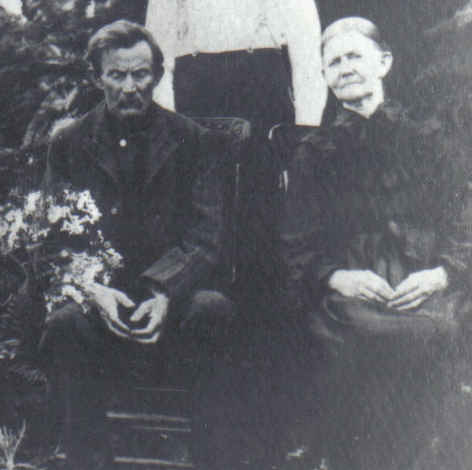 the next year he was in and out of hospitals. In June 1863 Reddick apparently left a hospital in Millikin’s Bend, Louisiana without permission and was immediately captured by the Confederates. After being shipped to Richmond as a prisoner of war, he was soon paroled at City Point, Virginia in July 1863. His next stops were parole camps in Annapolis, Maryland and St. Louis, Missouri. Rather than returning to duty with the 131st Illinois Volunteer Infantry in September 1863 as required, Reddick enlisted in Company G, 6th Illinois Volunteer Cavalry in December 1863. As part of the 2nd Brigade (Col. Coon), 5th Division (Brig. Gen. Hatch), Cavalry Corps (Maj. Gen. Wilson), the 6th Illinois Volunteer Cavalry participated in the storming of Redoubts No. 4 and 5 during the Battle of Nashville on December 15, 1864. After the Civil War, Reddick and Company G ended up in Opelika, Alabama, where in October 1865 he deserted and returned home to Illinois. Ironically, the 6th was mustered out just one month later at Selma, Alabama. In 1884 Reddick Smith was able to have the charge of desertion removed from his records by the War Department and receive a pension for his Civil War service. He died in Hardin County, Illinois in 1913. He is pictured above with wife Mary in the early 1900s.
the next year he was in and out of hospitals. In June 1863 Reddick apparently left a hospital in Millikin’s Bend, Louisiana without permission and was immediately captured by the Confederates. After being shipped to Richmond as a prisoner of war, he was soon paroled at City Point, Virginia in July 1863. His next stops were parole camps in Annapolis, Maryland and St. Louis, Missouri. Rather than returning to duty with the 131st Illinois Volunteer Infantry in September 1863 as required, Reddick enlisted in Company G, 6th Illinois Volunteer Cavalry in December 1863. As part of the 2nd Brigade (Col. Coon), 5th Division (Brig. Gen. Hatch), Cavalry Corps (Maj. Gen. Wilson), the 6th Illinois Volunteer Cavalry participated in the storming of Redoubts No. 4 and 5 during the Battle of Nashville on December 15, 1864. After the Civil War, Reddick and Company G ended up in Opelika, Alabama, where in October 1865 he deserted and returned home to Illinois. Ironically, the 6th was mustered out just one month later at Selma, Alabama. In 1884 Reddick Smith was able to have the charge of desertion removed from his records by the War Department and receive a pension for his Civil War service. He died in Hardin County, Illinois in 1913. He is pictured above with wife Mary in the early 1900s.
• General Thomas Benton Smith. Descendent: Ken Fieth (Metropolitan Archivist) of Metro Archives in Nashville, TN is a direct descendant of Brigadier Gen. Thomas Benton Smith who commanded the 20th Tennessee Infantry on Shy’s Hill at the time of the Federal assault on December 16, 1864. The 20th was part of Tyler’s Brigade of Bate’s Division assigned to the defense of the hill. After the capture of the hill and the surrender of Confederate troops, General Smith, an unarmed prisoner, was struck with a saber by a Union officer three times after a verbal exchange. One of the blows exposed Gen. Smith’s brain. Though active in politics off and on and appearing at reunions in Nashville after the War, he was in and out of the asylum as a result of the brain trauma that occurred as a result of the attack. Ken states that most of his mother’s records burned in a house fire in the late 1920’s so he has very few of the documents that were collected. He has, however, provided what appears to be two reunion photos of veterans in which General Smith was in attendance. The Shy’s Hill kiosk and parking area is located on the street named in honor of Gen. Smith — Benton Smith Road. Ken was selected to represent the Confederate side to place the memorial wreath since he is the descendant of the highest ranking officer identified, and it is only fitting since General Smith suffered such a grievous injury after the hill was taken.
• Pvt. William Stringfellow. Descendant:Robert Wayne Heims of Nashville, TN and Carl Jerry Klein of Nashville, TN. Pvt. Stringfellow was in the 50th Tennessee Infantry. Co. A 50th Tennessee Infantry (Maney’s Brigade) commanded by Col. Hume R. Field at Nashville, was part of Cheatham’s Corps and posted on Dec. 16, 1864 to the southwest of Shy’s Hill to protect the Confederate left flank. He was wounded in the eye. His wound never completley healed.
• Pvt. James Tew. Descendant: Great-great-great grandfather of Gwendolyn Kolkman, and 4th great-grandfather of the sons of John and Gwen Kolkman, including Stuart Kolkman (who was named after Confederate Maj. Gen. J.E.B. Stuart) and Nathan Kolkman (named after Confederate Gen. Nathan Bedford Forrest).
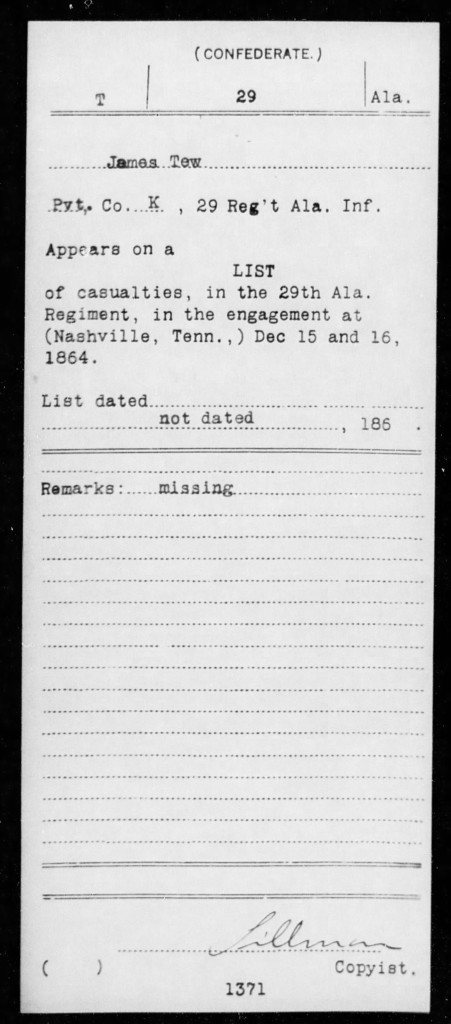 Mr. and Mrs. Kolkman and their sons live in Enterprise, Alabama. Private Tew enlisted with the 29th Alabama Regiment on March 10, 1862, at Clayton in Barbour County, Alabama. Family records indicate that he was killed in action on Dec. 16, 1864, the second day of the Battle of Nashville.
Mr. and Mrs. Kolkman and their sons live in Enterprise, Alabama. Private Tew enlisted with the 29th Alabama Regiment on March 10, 1862, at Clayton in Barbour County, Alabama. Family records indicate that he was killed in action on Dec. 16, 1864, the second day of the Battle of Nashville.
In the Battle of Nashville, the 29th Alabama Infantry was in Cantey’s Brigade under Brigadier General Charles M. Shelley, Walthall’s Division, Stewart’s Corps. On December 15, 1864, Cantey’s Brigade was located in the line of the Confederate left flank, postioned behind a stone wall facing westward across the Hillsboro Pike. About 100 men of the Alabama 29th had been sent to the west to support the defense of Redoubt No. 4.
Mr. and Mrs. Kolkman do not have further information about the action which Private Tew was involved in, nor his place of burial. Mr. Kolkman stated that oral history passed down through the family indicates that Private Tew was killed in action at Redoubt No. 4. To date, they have not been able to find records which substantiate that history.
The 29th Alabama and other units in Cantey’s Brigade received the attack from Smith’s XVI Corps of the U.S. Army after the Federal troops over-ran Redoubts 4 and 5 located west of Hillsboro Pike. On December 16, the day on which Private Tew was killed in action, Cantey’s Brigade was in the northern line of Stewart’s Corp between Granny White Pike and Shy’s Hill. The Kolkmans are members of the Coffee County Rangers Camp #911, 12th Alabama Infantry Regiment, Company D, of the Sons of Confederate Veterans in Enterprise, Alabama.
• Pvt. George Thomas Tracy. Descendant: Howard G. Mann, Nashville, TN. Pvt. Tracy was in Company D, 10th Kansas Infantry. He joined Lane’s Kansas Brigade, Co. H, 3rd Kansas Volunteers, and was later assigned to Co. D, 10th Kansas Infantry.
Howard has recently relocated to Nashville from Kansas City, MO. He has been a member of Civil War Roundtables in Harrisburg, PA and Kansas City, and is past president (2009) of the Kansas City Civil War Roundtable. He has researched and written about Lane’s Kansas Brigade, and has had articles published in Blue and Grey Chronicle, the online Civil War in St. Louis website, and others.
Among those he has researched including their involvement in Nashville is Private Tom B. Davis, Company A, 10th Kansas Infantry, who was promoted to corporal in New Company B on November 14, 1864 and wounded by being grazed on the head by a cannonball at the battle of Nashville; and 2nd Lt. Henry Banblitz, New Company A, 10th Kansas Infantry, who was promoted to lieutenant on July 1, 1865.
The 10th Kansas Infantry Regiment was in Garrard’s Second Division, Smith’s XVI Corps, during the battle of Nashville.
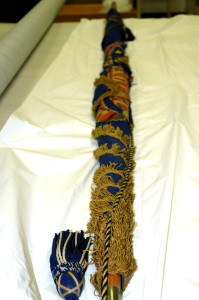 The 10th Kansas Infantry flag, which was awarded to them for being best in marching at the St. Louis Sanitary Fair in 1864, when they were stationed in nearby Alton, Illinois at the military prison, is preserved in the Kansas State Historical Society’s flag collection.
The 10th Kansas Infantry flag, which was awarded to them for being best in marching at the St. Louis Sanitary Fair in 1864, when they were stationed in nearby Alton, Illinois at the military prison, is preserved in the Kansas State Historical Society’s flag collection.
• Lt. Elihu Halstead Wadsworth. Descendant: Roger A. Tenney. Lt. Wadsworth, Roger’s great-great uncle, was initially a corporal in the 18th Michigan Volunteer Infantry 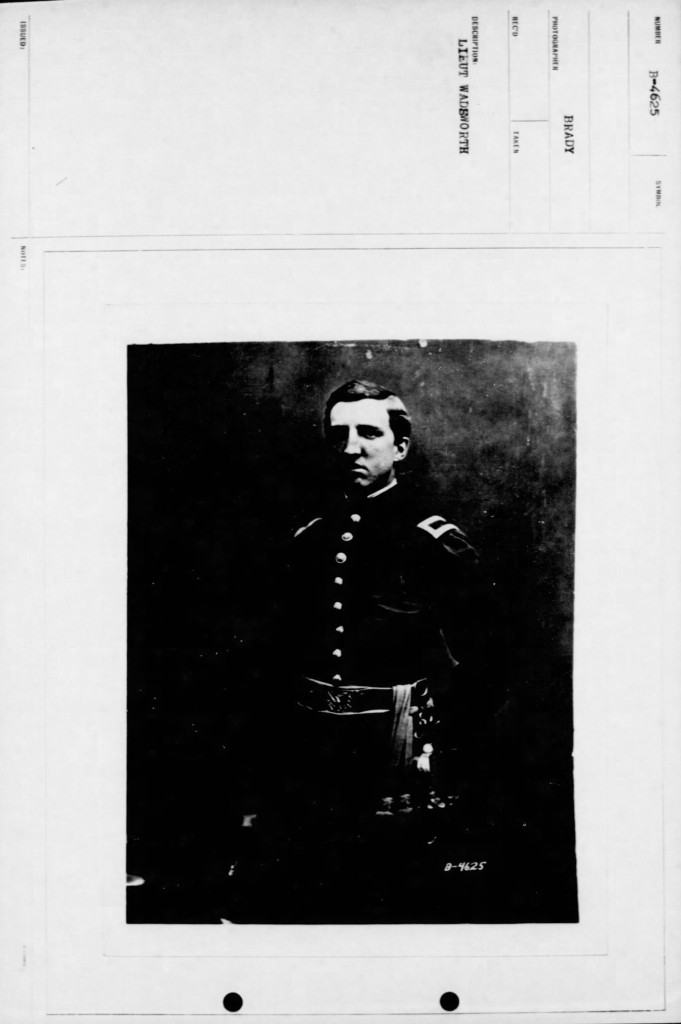 stationed in Nashville, but in October, 186,3 he resigned that position and was commissioned a 2ndLieutenant in the 16th United States Colored Troops.
stationed in Nashville, but in October, 186,3 he resigned that position and was commissioned a 2ndLieutenant in the 16th United States Colored Troops.
During the Battle of Nashville, he served on Col T.J. Morgan’s staff and fought with Steedman’s Brigade at the railroad cut near Granbury’s Lunette. He is included in the official report of Col. Morgan. He served in Nashville and Chattanooga throughout the remainder of the
In his official report, Col. Thomas Morgan, 14th USCT, praised Lt. Wadworth’s bravery under fire:
“To each member of my staff, Lieutenants Cleland and Hall, Forty-fourth U.S. Colored Infantry, Wadsworth and Dickinson, Sixteenth U.S. Colored infantry, and Wyrill, Fourteenth U.S. Colored Infantry, I am indebted for the promptness with which they carried out my desires, exposing themselves cheerfully to necessary danger.”
Capt. Robert Hancock Walter. Descendant: Great grandfather of Tom Carr of Bowling Green, Kentucky. Capt. Walter was Captain of Company K of Lt. John W. Hammond’s 65th Indiana Volunteer Infantry Regiment, (<http://en.wikipedia.org/wiki/65th_Indiana_Infantry_Regiment>) of Col. John S. Casement’s 2nd Brigade, Brig. Gen. Jacob D. Cox’s Third Division of Maj. Gen. John M. Schofield’s XXIII Corps. Capt. Walter was a son of Thomas Ustick Walter, the architect of the U.S. Capital during the Civil War (1850-1865), and the designer of the dome of the Capitol building and of the Senate and House of Representatives wings. Tom Carr is secretary of the Bowling Green (KY) Civil War Roundtable.
Capt. Walter would have been in the Federal line that approached Shy’s Hill on Dec. 16 from the west, advancing across the Hillsboro Pike.
Why Fly the Minnesota Flag Atop Shy’s Hill?
By Philip Duer, former President of BONPS
“People wonder why we fly the Minnesota State flag at the summit of Shy’s Hill. For those who are knowledgeable about the battle here, it was the Minnesota regiments who assaulted the hill and charged across muddy cornfields below it to break the Confederate line on the second day, Dec. 16th, 1864. Howard Pyles’ painting (at the Shy’s Hill kiosk) portrays that dramatic attack. Minnesota suffered the most casualties at Nashville than in any other battle. It is with thanks to Vern Ege who has brought this article to our attention of a man devoted to finding the graves and stories of CW soldiers from Minnesota. His inspiration — stories of 2 soldiers from Minnesota who died at Nashville! While not the bloodbath of many battles, the story of Nashville continues to be of interest. One only has to read the late David Logsdon’s “Eyewitness to Nashville” to feel the growing tension, excitement, and despair as both armies faced off for 2 brutally cold weeks before the battle.
Vern’s ancestor’s story is provided below as we document those who fought here. http://www.startribune.com/local/178468071.html
Unique Document Shared With BONPS
“Too often we forget that many Tennesseans, black and white, fought to preserve the Union. They believed as much in what they saw as their duty and what was right as those that seceded with their States and fought for the Confederacy; in fact they probably had a heavier emotional burden and cost as most of their neighbors saw them as turncoats.
“This Commission was signed by Governor Andrew Johnson in April of 1864 granting a Commission to 2nd Lt. Wm. L. Cate in Co. A, 4th Tenneessee Cavalry (US) which fought engagements with Confederate cavalry in East and Middle Tennessee and was engaged at the Battle of Nashville in Wilson’s Cavalry Corps, 7th Div. (Knipe) 1st Bgde. under Hammond and was involved in action against the Confederate rearguard at Hollow Tree Gap, Franklin, Sugar Creek, etc.
“My thanks to David Cate from Texas, a direct ancestor of 2nd Lt. Cate, and the other many ancestors who gave permission to put this document on our website.” [Click here to view the Commission.]
Philip Duer Pres. BONPS (2011 -12

